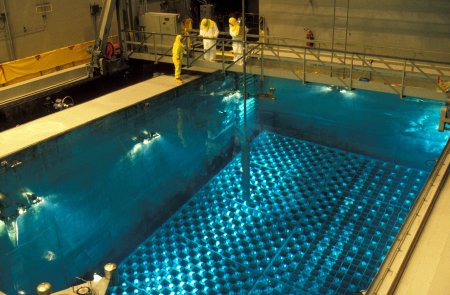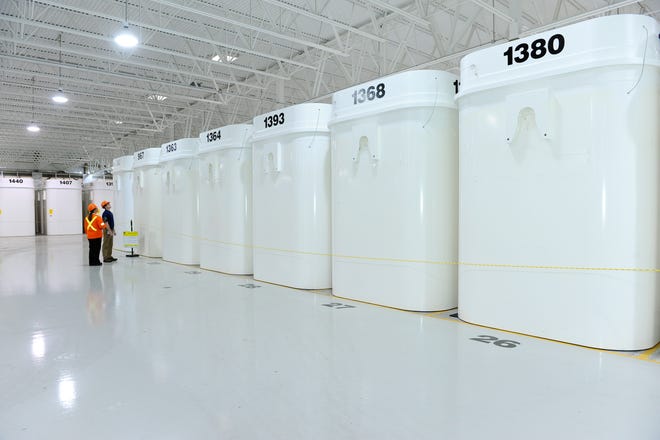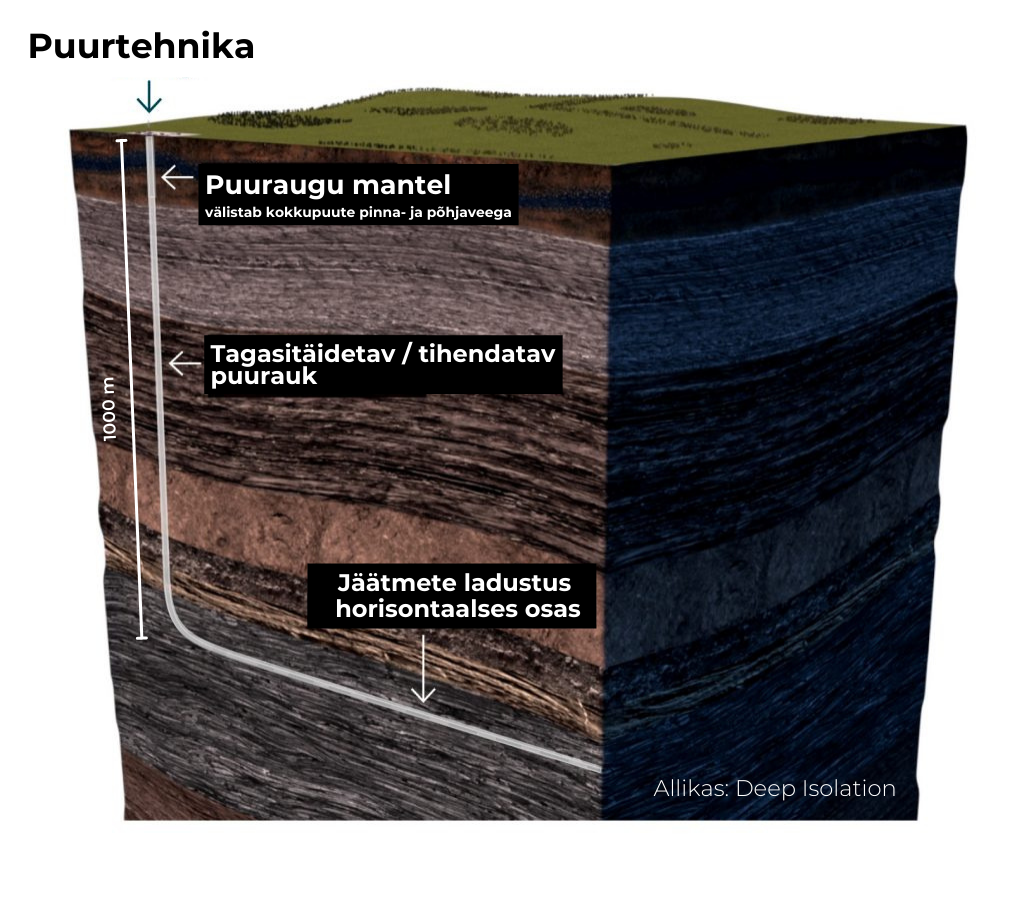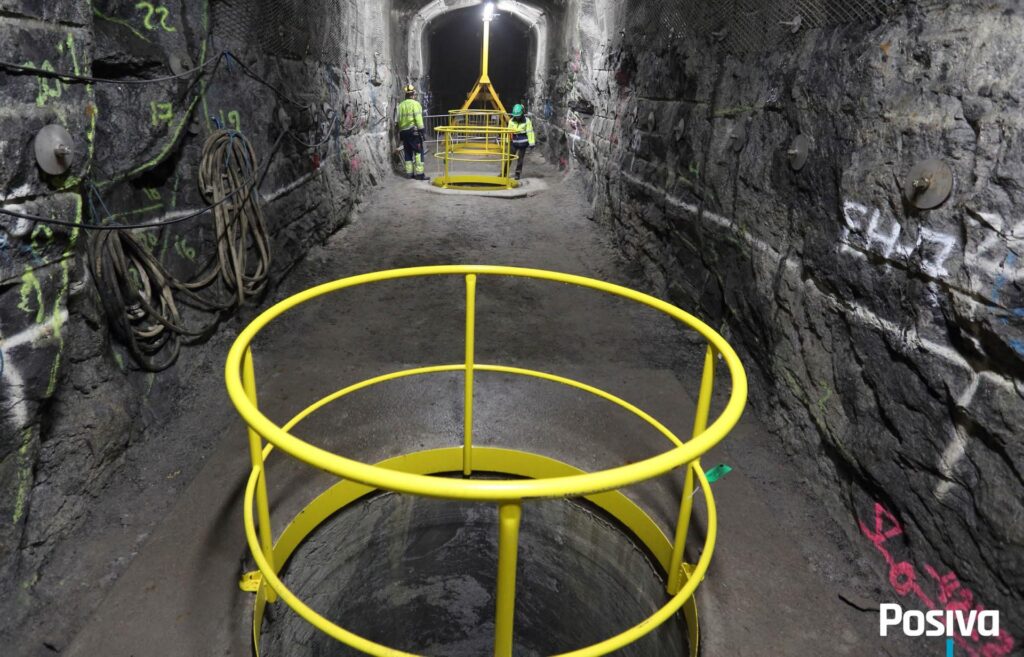Waste management
- Nuclear power is the only type of energy production where waste management is taken into account at an early planning stage.
- The cost of collecting, treating and disposing of nuclear waste is already included in the electricity sales price. The safe management of nuclear waste is neither very expensive nor very difficult, as the volume is relatively small.
- Under normal practice, nuclear plants collect 0.3-0.5 (sometimes up to 1) cent per kilowatt-hour of electricity produced in the waste fund. This fund is used for the construction of a waste disposal plant once a sufficient amount of spent fuel has accumulated.
The planning of any nuclear power plant includes the development of a waste management plan. Waste management is part of a plant's fuel cycle.
Spent nuclear fuel is characterised by high levels of radioactivity. Radioactivity is invisible but not unknown - over the centuries, scientists have studied it in depth and developed standards and working methods for handling radioactive materials in a way that does not pose a risk to the operator or the surrounding environment.
The logistics of waste management at a nuclear power plant can be summarised in a simplified way in three parts - spent fuel storage at the plant in a spent fuel pool, intermediate storage, and final storage. This may be supplemented, for example, by the reprocessing of the waste into new nuclear fuel or for some other purpose, such as waste reduction.

Spent fuel assemblies are lifted out of the reactor and placed in a water-filled pool next to the reactor. The reactor is located in a water-filled space at all times, and there is enough water above the reactor to allow the fuel rod to be lifted out and placed in the cooling pool without any danger from the radiation emitted.
Radioactivity levels in spent fuel are relatively high when it is removed from the reactor, but are falling rapidly. During this time, it is safest and most practical to allow the spent fuel pool to "cool down" before further disposal.

After initial storage at the plant, the radioactivity level of spent fuel has decreased sufficiently to allow it to be stored in a special interim storage facility. The radioactive materials are sealed in a special shielded container and transferred to an interim storage facility where the radiation levels will further decrease over the years.
At present, most of the world's spent nuclear fuel is stored in interim storage - a very valuable and reprocessable material that can be reused in certain types of nuclear reactors. France recycles about a tenth of its nuclear fuel. as MOX fuel.

The final stage in the storage of nuclear waste is final disposal. Although significantly lower than the initial levels, the radioactivity of spent fuel will remain harmful to living organisms for a very long time. Exposure of the waste to the biosphere must therefore be excluded for a very long time - at least hundreds or thousands of years, depending on the composition of the materials and the half-lives of the substances.
Since in some parts of the Earth's crust the bedrock has remained unchanged for billions of years and will continue to do so for at least as long, the best place for nuclear waste is deep underground. In Finland, the crystalline bedrock (granite in common parlance) is exposed at the surface, while in Estonia it is under sedimentary rocks at a depth of a few hundred metres.
Did you know that...
Finland and Sweden are also disposing of spent fuel in a crystalline cluster.
The construction of the final recharge in the crystalline matrix is underway, both in terms of. In Finland and In Sweden - there will be repositories at a depth of about 450 metres. Finland and Sweden have large nuclear plants and more spent fuel, so a larger repository is suitable.

A smaller station is suitable for Estonia. As a smaller plant also produces a smaller amount of spent fuel, a smaller-scale waste management solution - deep wells - would be more suitable for Estonia. Deep well drilling is widely used in the oil industry, for example, so the technology and skills needed to use it are widely available worldwide. Deep Isolation, a US company, has also developed a suitable solution for the final disposal of nuclear waste, which is presented in more detail in from this video.
The conditions under which and where to build deep well technology-based final disposal in Estonia are. researched by Deep Isolation in collaboration with engineering firm Steiger.
